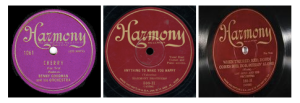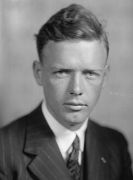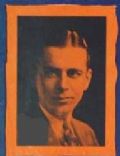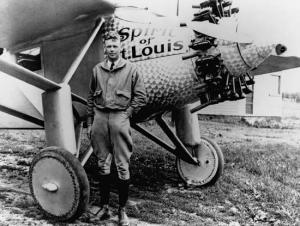This week on Zayde’s Turntable is an album of no true monetary value to a collector, but I wanted to learn a bit more about it because it captures an important historical moment in American history.
First, a word about the label. Harmony Records were pressed from 1925 until the early 30s and was owned outright by Columbia Records. It was often used as a low-price outlet for Columbia’s reissues and, in the 1950s, Columbia revived the label for a series of LPs with nothing but reissued tracks (about five songs per side). Columbia continued to release reissues on the LP version of the label into the mid 1970s.
Perhaps the most interesting facets of the original Harmony Records is their role in straddling one of the most significant technological shifts in recording history: the movement from acoustic recording to electrical recording. Reportedly Columbia had just completed a major overhaul of their acoustic recording system when the new fad – electrical recording – came onto the scene. Rather than scrap their significant investment in the acoustical studio they simply continued to utilize it for their “lower end” Harmony label. The result is some of the finest, and last, acoustically recorded commercial records.
Acoustical recording is a mechanical process in which the artists performed live, their music being captured in a massive machine with a diaphragm; a needle connected to the diaphragm literally cut the recording into master disc (or cylinder). Level control was achieved by actually having a performer move physically closer to or further from the machine.

The Victor Orchestra recording acoustically. Auto-tune function not available on this model; sorry, Ms. Black.
Electrical recording was introduced in 1925 and is still, in many respects, the manner by which audio recordings are made. Electrical recording systems allow for microphones, over-dubbing, level adjustment, and, these days, even more. In its earliest incarnations, however, the process still physically cut a master record with a needle, meaning that a mistake at any point in the recording rendered the entire take – and record – useless. (Some labels would reissue scrapped takes of popular songs on later albums, though it was far more common to simply reissue the originally released take.)
This album, the only Harmony label in my collection (according to my notes from the late 1990s) is in Good to Very Good condition, with some slight wear and one light scratch to one side (the scratch does not effect the record’s playability and both my Symphony phonograph needle and my Crosley Archiver needle were able to navigate it without problem). It is a standard 10-inch diameter 78-RPM black vinyl disc with ¼” spindle hole. The record catalog number is Harmony 418-H and the master number is 144218/144219.
Peculiar to all post-1924 Columbia records is a third identifying number pressed into the vinyl of the end gap of the record at the 12-o’clock position: 3-B-5 on the A-side 1-B-6 on the B-side. The first number is the take number, the middle letter designates the “mother” (the metal master disc), and the final number indicates the “stamper” (the metal “negative” of the mother). One stamper could press out about 1,000 copies of a record before it was no longer useable (hence the need for a “mother” that could create more stampers). With this information we know that the A-side song took three takes and the B-side song took only one take. At least two mothers were created (probably more), and at least 5 stampers for the A-side and 6 for the B-side – meaning, at a minimum, about 10,000 to 12,000 copies of this record were made.
The A-side recording is “Lucky Lindy,” lyrics by L. Wolfe Gilbert and music by Abel Baer, and runs approximately 2 minutes and 41 seconds. The B-side recording is “Lindbergh (The Eagle of the U.S.A.),” lyrics by Howard Johnson and music by Al Sherman, and runs approximately 2 minutes and 55 seconds. Both songs are sung by tenor Jack Kaufman, backed up by an unnamed orchestra. While I could find no indication of a specific recording date, it is likely from 1927 or early 1928.
Both songs were written on the occasion of “Lucky” Charles Lindbergh’s celebrated May 1927 trans-Atlantic solo flight. The record-setting event engendered a remarkable level of patriotic fervor and an incredible number of musical tributes, perhaps more so than any other event in American history until then or since. Ironically, the flight was considered an illustration of mankind’s (and America’s specifically) technological prowess and ingenuity – I say ironic because this particular record was recorded in what was then an antiquated technology, the acoustic method. Lindbergh became celebrated more than any star of Hollywood or radio and there was a rush to capture that spirit by the leading cultural medium of the day: recorded music.
To say the quantity of songs written about Lindbergh’s flight exceeds that written to mark any single event in American history before or since is not an exaggeration. Not even including the still recognizable dance craze inspired by the flight (the Lindy Hop), in all in the two years following Lindbergh’s journey the U.S. Copyright Office received three hundred applications on songs related to the flight and the pilot. Thirty songs alone had the same title – “Spirit of St. Louis,” Lindbergh’s plane. Another twelve were entitled “Lindy” (there was some confusion over the spelling, resulting in Lindberg, Lindburg, Linberg, Linderburg, and Linbergh). The third most popular title was “Lone Eagle” – a commonly used metaphor for the pilot that combined jingoistic American symbolism with the physical feat of flying itself. Other Lindbergh tributes included “Won’t You Take Me to Heaven, Please, Lucky Lindy Do,” “America Did It Again,” “Like an Angel He Flew into Our Hearts,” “Plucky Lindy’s Lucky Day,” “Just Like a Butterfly through Sun and Rain, and “He Did It, the Thing that Couldn’t Be Done.” The Hoover for President campaign benefited from “If He’s Good Enough for Lindy.” The volume of musical tributes was so great that one Tin Pan Alley songwriting team even wrote one entitled “This Song Is Not About Lindbergh.”
In 1929 Kurt Weill, Paul Hindemith, and Bertolt Brecht penned an opera entitled “Der Lindberghflug” (Lindbergh’s Flight), though Brecht would later remove all references to the pilot and rename the piece “Der Ozeanflug” (Ocean Flight) in 1950 in reaction to Lindbergh’s perceived Nazi sympathies. Indeed Lindbergh’s apparent right-wing political viewpoints also engendered negative musical references, though not for some decades after his flight. In the 1940s Woody Guthrie’s “Lindbergh” skewered the celebrated pilot for his affiliation with the far right America First Party (“They say America First, but they mean America Next”). Guthrie probably would have found the lyric “Lucky Lindy, right all along…” on the A-side of this record to be a bit too true.
On the A-side we have the prolific recording artist and vaudevillian Jack Kaufman singing Gilbert and Baer’s “Lucky Lindy” – perhaps the single most popular and widely produced of the Lindbergh paeans. Gilbert and Baer had just finished composing the piece on May 21, 1927 when word of Lindbergh’s safe landing at Le Bourget was announced on the radio. It was performed that very evening at several venues around New York City; Leo Feist printed the sheet music that very weekend and it was on sale by Monday. On Tuesday the number was headlining at the Paramount Theater, being performed on the cinema’s massive Wurlitzer in between films. The song was probably featured on every major label by most of the leading singers of the day. I can find evidence of (in addition to the Harmony recording) a ca. 1927 recording by Vernon Dalhart on Perfect (#12345), another Jack Kaufman recording (possibly the same) also from around 1927 on Velvet Tone (#1418-V), a Domino Records (#17260) recording with baritone Ernest Hare, another Ernest Hare recording on Banner (#1994-A) (which one EBay seller is currently listing for $1), and a May 26, 1927 (yes, five days after Lindbergh landed) Victor scroll recording (#20681-A) by Nat Shillkret and the Victor Orchestra. Not one of these albums appears in Les Docks’ guide to “collectible” records – in fact, I could not locate a single of the Lindbergh tribute songs anywhere in his compendium. This simply further illustrates that, today, value is determined more by scarcity than historical import, musical quality, or even the featured artist.
Abel Baer (1893-1976), a World War I veteran, originally trained to be a dentist, but abandoned that career in 1920 when he joined a music publisher as a staff writer. His works include many Tin Pan Alley hits, including “Mama Loves Papa,” “When the One You Love, Loves You,” and “I’m Sitting Pretty.” Less celebrated today is his World War II jingle “We’ve Got A Job To Do On The Japs, Baby.” Two years after penning “Lucky Lindy” – probably his greatest commercial success – Baer moved to Hollywood and wrote songs for the films “Paramount on Parade,” “True to the Navy,” and “Frozen Justice.” His credits also include the Broadway scores of “Lady Do” and “Old Bill M.P.”
Louis Wolfe Gilbert (1886-1970) started as a singer in a quartet on Coney Island, before being discovered by an English producer and being brought to London to perform as part of The Ragtime Octet. He started writing music in 1912 and made the move to Hollywood in 1915, writing – eventually – over 250 songs for film, television, and radio, including “Ramona” – the very first motion picture theme song, as well as numbers for the Eddie Cantor Show and the lyrics for the hit children’s program “Western Hop-Along Cassidy” on NBC. Gilbert was an astute self-promoter and one of the first songwriters to publish and market his own catalog; his acumen for the business led to his selection to serve as director of ASCAP from 1941 to 1944.
The B-side recording is Kaufman singing “Lindbergh (The Eagle of the U.S.A.)” – again keeping with the eagle symbolism. It is clearly the more jingoistic of the two songs, with Al Sherman, the writer, appropriating snippets of melody from classic American anthems (listen for a bit of the “Star Spangled Banner” and “Yankee Doodle” in the clip below). Like “Lucky Lindy,” this tune was released within days, perhaps even hours, of Lindbergh’s successful landing in France in May 1927. In addition to this recording I was able to identify several contemporaneous recordings: three issues of Vernon Dalhart singing it, one recorded on May 23 (two days after he landed!) on a Victor scroll record (#20674-A – note how close the catalog number is to the “Lucky Lindy” Victor recording, illustrating how closely together the two albums were released), one on Edison Blue Amberol cylinder (#5362), and one on Perfect (#12345; the reverse side of the same disc with “Lucky Lindy,” exactly as with this Harmony record, though with a different artist; one seller on EBay currently lists this disc for slightly overpriced cost of $30). There was also a Harry Crane recording on Oriole Records (#922-A) and another issue of the Jack Kaufman recording found here on Velvet Tone (#1418-V – again, identical to this record, in this case in both song selection and artist).
Lyricist Howard Johnson (1887-1941) was likewise a veteran of World War I. After getting out of the Navy in 1917 Johnson, a pianist, joined ASCAP and began his career as a songwriter. In addition to penning “I Scream, You Scream, We All Scream for Ice Cream” Johnson was behind many of the most popular ballads of the period. One of Johnson’s (now ironic) pieces was the 1917 song “China, We Owe A Lot To You” (music by Milton Ager). No kidding.
Al Sherman (1897-1973) came to America from Prague in 1909. Speaking little English and serving as a surrogate father for his four siblings after their father left them, Sherman taught himself piano and quickly became one of the most in-demand improvisers in America. He developed a reputation for providing “mood music” and his skills were sought by many of the leading film stars of the silent movies; in 1916 Universal signed Sherman to do bit parts in the films himself. In 1918 he joined the Remick Music Company as a staff pianist, composing numbers alongside some of the top songwriters of the day, including George Gershwin. Sherman also organized and directed his own orchestra that played in both Miami Beach and New York City. Sherman’s sons, Robert and Richard, would continue in their father’s footsteps, eventually writing the music for the classic films “Mary Poppins” and “Chitty Chitty Bang Bang.” Sherman’s own Tin Pan Alley credits include over 500 songs, most notably “Over Somebody Else’s Shoulder,” “For Sentimental Reasons,” and “Potatoes Are Cheaper, Tomatoes Are Cheaper, Now’s The Time To Fall In Love,” which became his signature tune and “helped raise the spirits of the Depression generation.” His songs made or furthered the careers of a remarkable roster of musicians: Maurice Chevalier, Fred Waring, Louis Armstrong, Benny Goodman, Ella Fitzgerald, Billie Holliday, Tommy Dorsey, Frank Sinatra, Al Jolson, Bing Crosby, Eddie Cantor, Ruddy Vallee, Ozzie Nelson, Lawrence Welk, Peggy Lee, Patti Page, and Duke Ellington and the Cotton Club Orchestra. His music can be heard in the Broadway hits “Ziegfeld Follies,” “George White’s Scandals,” “The Passing Show,” and “Earl Carroll’s Vanities.” His film music includes songs for “The Big Pond,” “Sweetie,” “The Sky’s the Limit,” and “Sensations of 1945.”
Sherman’s music continued to influence American musicians even into the 1980s, when Cyndi Lauper’s rendition of Sherman’s “He’s So Unusual” – titled “She’s So Unusual” (1983) – even featured scratches and hisses designed to sound like a vintage 78-RPM record. The song hit #4 on the Billboard pop charts and won a Grammy for Best Album Package; it made #494 on Rolling Stone’s “500 Greatest Albums of All Time” and sold more than 16 million copies worldwide.
The vocalist on both sides of the album is tenor Jack Kaufman, one of the famous singing brothers Irving, Phillip, and Jack Kaufman, who originally hailed from Syracuse, New York, about an hour from where Zayde’s Turntable currently resides. Irving has been called the “most recorded singer between 1914 and 1930” and his two brothers, who performed for a while as “The Kaufman Brothers” (until Phillip’s death in 1918), were quite prolific in their own respects.
Jack and Phil’s early vaudeville acts seemed to include quite a bit of the reviled “blackface” routines. An undated period newspaper review of their act states:
“The Kaufman Brothers… [began] their act by impersonating the Russian dancers and the Parisian vocalist who had just preceded them.” … “Especially worthy of attention are their parodies of Italian songs. Both men… play ‘swell coons’ attractively.” … “Their entrance is made in bangy, bangy coon-shouter style… These brothers have excellent voices, but are too full of monkeyshines to take time to sing properly.” … “Ragtime and Italian songs are their long suit.” … “They sing exceptionally well, but otherwise just indulge in effervescent nonsense and wear red vests and checkerboard suits.” … “Their Yiddiher Opera brought a storm of applause.”
They grew to become “second stringers” – vaudeville acts that filled out the bill for larger stars like Irene Franklin and Will Rogers.

Newspaper cartoons depicting Phil and Jack Kaufman in their blackface performance (top row and bottom left, 1910-1911; bottom right, 1914).
After Phil’s death, Irving joined with Jack and the two performed together for a number of years. The partnership dissolved in 1923, though they reunited briefly again starting in 1928. It was during this five year hiatus that Jack, performing and recording as a solo artist now, cut this album for Harmony Records. Irving and Jack (and, earlier Phil) were studio workhorses and recorded separately and together probably more albums during the Tin Pan Alley period than any other musical family, appearing by name or by pseudonym on quite literally hundreds of records for dozens of labels. Jack’s sense of theatricality, a maybe even bombast, comes across in the two recordings on this album – listen to his rolling R’s and energy, due probably to both the enthusiasm around the event and his own personality. The last Kaufman recording was made by the busiest of the brothers, Irving, in 1974, meaning the Kaufman era of original recordings lasted a remarkable 60 years.
This May America will celebrate the 85th anniversary of Lucky Lindbergh’s historic non-stop solo flight across the Atlantic. The air mail pilot took off from Long Island a virtual unknown and landed, 3600 miles and one day later, in Paris, France as a national hero and icon. One can imagine the songwriters, musicians, studio executives, sheet music publishers, and recording technicians scrambling for that one week in late May in 1927, trying to be the first to get a piece of that Lindbergh magic. In some ways it may not seem so different than today’s commercialism. But, when I put that record onto Zayde’s Turntable and try to imagine the energy, the (much needed) optimism, and the pride that must have been coursing through the singer, the band, and the original listener, playing this disc for the very first time in 1927, I can’t help but think that it is, maybe in some way, just a bit different.















